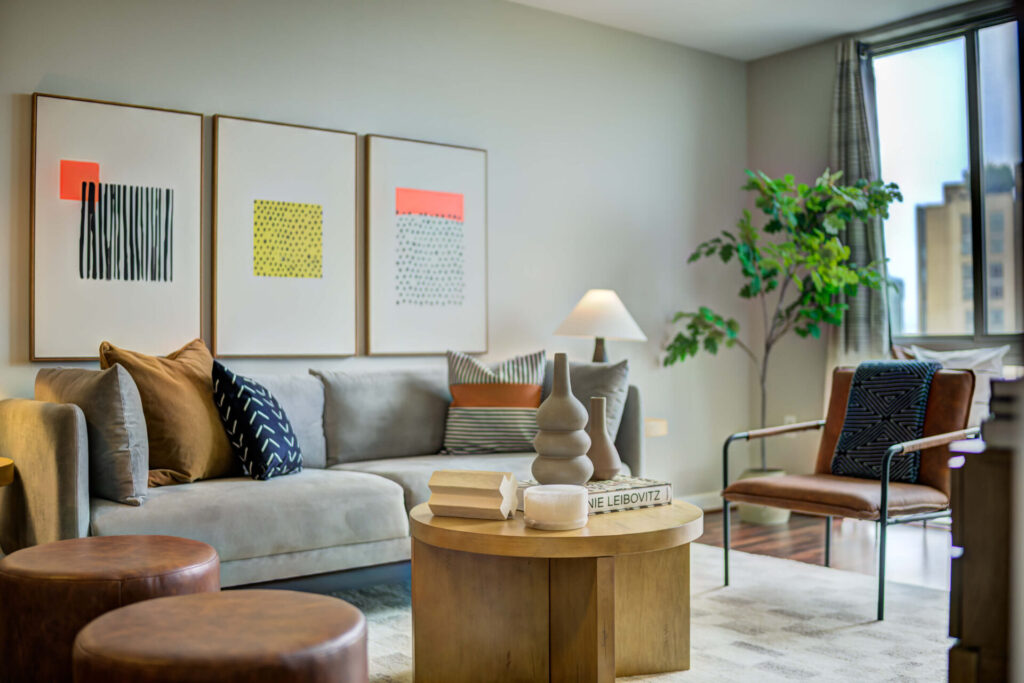Michael Fowler is the founder of Michael Fowler Creative and got his start in the real estate industry as a REALTOR® licensed in DC, Maryland, and Virginia with over $100m in sales. Unsatisfied with the staging options Michael saw in the market, he started offering staging and design consulting services to his clients. In 2021, his real estate colleagues took notice of his use of staging and inquired who he was using to stage his listings and Michael expanded his staging services to them as well. It was a natural fit for Michael to bring together his love of real estate and homes with his passion for good design.
There is an overlap as an experienced real estate agent who also stages homes for sale. When I suggest something to an agent, it carries more weight than if I were just a stager. I know the struggle of an agent intimately and can relate to the agent’s needs.
Since its inception, Michael Fowler Creative has staged homes for hundreds of sellers and their agents. As he curates all things home, he continues to create spaces that move and places that inspire.
The one thing I wasn’t ready for was the logistics involved—planning and managing what went where and when is 90% of this job. It’s not just design and fluffing pillows.
The Home Stager’s Perspective: A Conversation with Michael Fowler
Q: How does your commitment to RESA®, the exclusive nonprofit trade association for stagers, align with your professional goals and values?
Michael: I have always felt that by aligning with other professionals in your industry and community, you both enhance yourself and the greater whole. I have experienced this with my career as a real estate agent by participating in the local and National Association of REALTORS® and in my community, where I have volunteered within many organizations.Now, as I have begun my new career as a home stager, I felt that it was only natural to join RESA®. As a newer stager, I appreciate the ability to learn from those who are more experienced and to gain insight into best practices. I hold myself to high professional and ethical standards, and I believe that by being a member of RESA®, this commitment will be even more apparent.
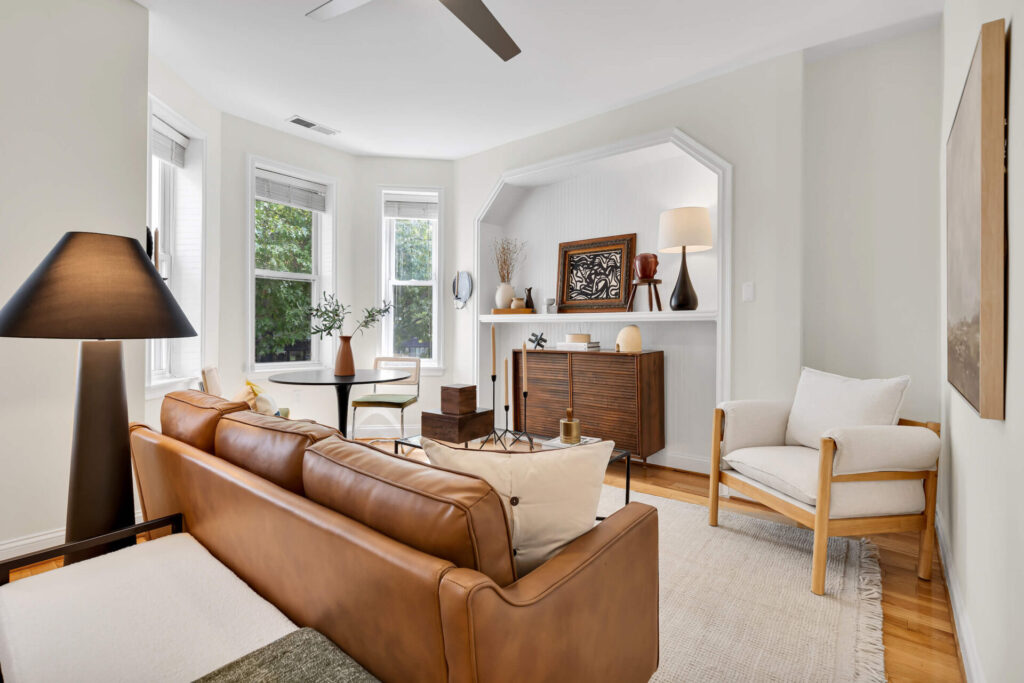
ALL PHOTOS PROVIDED BY MICHAEL FOWLER CREATIVE
Q: Take us back to your very first day on the job as a home stager. What were your feelings, expectations, and the most memorable moments from that day?
Michael: I think we all have a bit of imposter syndrome. I never felt like anything I was doing was good enough. It took many rounds of positive feedback before I could trust my instincts and vision.
I think that little voice is always there; I can tell it to shut up a little easier now. The one thing I wasn’t ready for was the logistics involved—planning and managing what went where and when is 90% of this job. It’s not just design and fluffing pillows. The volume of building furniture and endless trips to the dump are not something you ever prepare for. So many late nights and numb thumbs at the beginning! I’ve since learned to hire support and use the drill.
Q: How has your perception of the staging industry evolved since you started Michael: Staging is not about making a home as generic as possible so that anyone can see them living there. Staging is about inspiring people to want to live there. They should walk in and it should be memorable and aspirational. It shouldn’t be boring.
Q: Would you share some insights into your creative process? Where do you typically find inspiration for your staging designs, and how do you translate that into your work?
Michael: I devour interior design content endlessly. I try to incorporate that into my designs as often as possible. Walking into a space, I can typically see what it should look like. Then, based on who I think is the target buyer, in concert with the agent, I try to create a home that this buyer would want to live in.
Whether it is an artsy neighborhood that calls for lots of colors or a trendy area that calls for something more fashionable and hip. Often, the architecture dictates what I should put into the space and I am often trying to show off the uniqueness of the space or inject interest if it’s lacking architectural features.
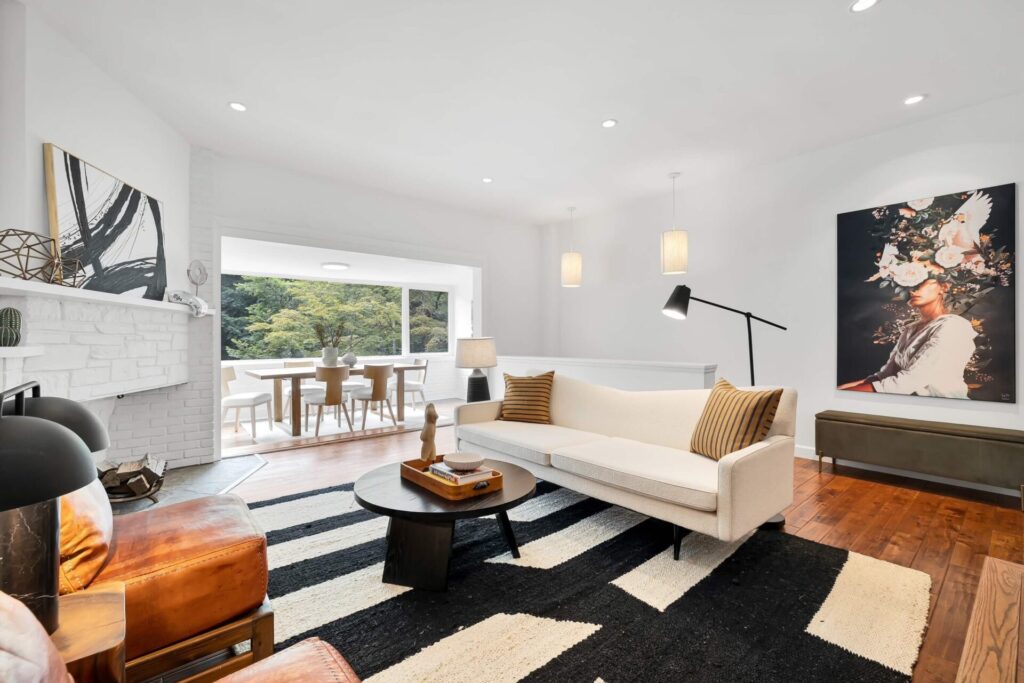
Q: How have the skills and experiences from your previous career uniquely equipped you for success in the world of staging?
Michael: There is an overlap as an experienced real estate agent who also stages homes for sale. When I suggest something to an agent, it carries more weight than if I were just a stager.
I know the struggle of an agent intimately and can relate to the agent’s needs. There is a tremendous value added to the selling agent in having an agent that also stages.
Q: Could you share some insights into how effective communication and partnership between stagers and agents can lead to successful property sales?
Michael: I think I come from a unique position, as a REALTOR® myself. I know that my opinion is valued and respected as a colleague and stager. Typically, real estate agents are results-driven. If it yields the expected outcome, how you get there is inconsequential.
I approach agents from a collaborative position, but they trust me to execute my vision because that is typically why they hired me. I want agents to feel heard, but know that I will make their listing beautiful and look great in photographs. I want it to stand out from the other listings on the market with gorgeous rooms. Most importantly, they see from my track record it will get sold.
Q: If you could stage a home for any celebrity, living or historical, who would it be, and what kind of design theme would you choose for their home?
Michael: I have been able to design for a couple of sitting members of Congress, which is kind of the most DC thing ever to say. I can tell you, they like things pretty safe and vanilla, so although being able to brag about that is cool, it isn’t my dream client.
I think designing for someone like RuPaul would be an absolute dream. After seeing Martyn Lawrence Bullard’s feature in AD, I was gobsmacked. It looked like so much fun! Just letting your creativity run wild and being able to be a maximalist and inject all the fun details you can think of would be a dream.

At my core, I am a maximalist and love that Hollywood Regency glam style. So literally, anyone who says, “Here’s the keys, have fun!” is my ideal client. It’s even better if they have the budget to match.
Q: Staging can transform a property, but it’s not just about aesthetics. How do you balance design principles with the practical aspects of making a home more marketable?
Michael: I often look for places to add value. Whether it is an overlooked corner that’ll make a great home office or a dining space where there may not be one currently, I know what buyers want and are looking for. Adding those moments so that buyers can not just see themselves in a space but know that it will fulfill their needs is essential.
In a market like Washington, DC, where everything is compact, you have to look for opportunities to add functionality where it otherwise may not be. Everything needs to have a dual function.
Q: Could you share a memorable success story where your staging made a significant impact on a property’s sale price or time on the market? What were the key elements that contributed to that success?
Michael: Before the interest rates started climbing, my staged listings averaged a week or less on the market. There have been many times that an agent has told me, “your staging sold that house.”
One house was an older home that needed work but was in a desirable area. We designed the home with an eccentric and bohemian style that showed buyers how they could live there, while also distracting from some of the more unattractive parts of the house. Truly, we were allowing the buyers to see through the flaws and see what the home could be.
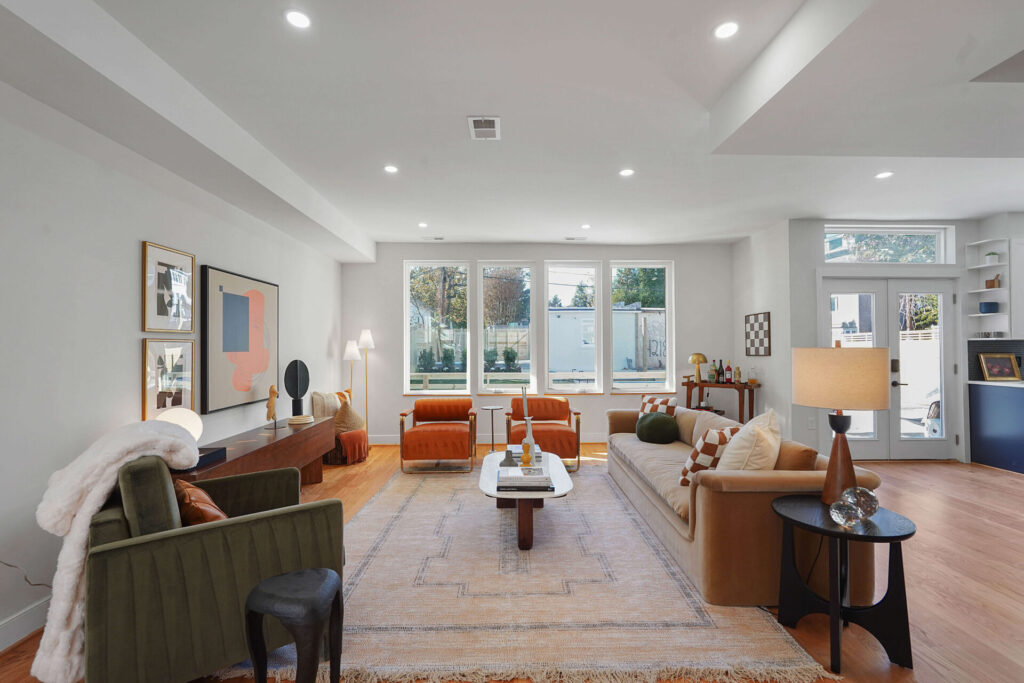
Q: The staging industry often requires adaptability and flexibility. How do you stay current with market demands and changing client preferences? What strategies do you use to continuously improve your skills and stay competitive?
Michael: I am constantly updating my inventory. I am a compulsive shopper. This is one of those jobs that rewards that. I have some essential pieces that I use in every job but I constantly have an eye out for affordable pieces to layer in that add a zip to every job. I want to make every listing, whether a studio or a 7-bedroom house, look like a million bucks. I find affordable, on-trend pieces that make it look current while not destroying the profit margin.
I am constantly on Instagram looking at our favorite interior design professionals and scouring the internet to find cost-effective ways to incorporate that into my stagings that, at the core, is still though my lens but speaks to what buyers are seeing in shelter magazines and on their own Instagram feeds.
Q: Beyond aesthetics, what do you believe are the most important qualities or skills that a successful home stager should possess? How have these qualities shaped your own career?
Michael: Organization and decisiveness. 90% of staging is operations and logistics. You have to be organized. I am incredibly task and list-driven. Otherwise, my ADHD takes charge.I am constantly figuring out how to streamline everything. I take notes and make endless lists to be able not to forget anything.
A stager’s job is figuring out how to get the right thing to the right place at the right time. If you don’t, you better be able to problem-solve quickly and be decisive about it. There’s no time for wishy-washey during an install. Though, I will say that my phrase on most job sites is “Final Answer… but, I reserve the right to change my mind.”

Q: Can you recall a particularly challenging staging project? What obstacles did you face, and how did you overcome them? What did you learn from that experience?
Michael: Every single occupied stage I do is a challenge. Every time, I say it’s the last time. Incorporating other people’s things into my design is a challenge. I have been able to overcome this with creative solutions.
Q: In the world of home staging, sometimes surprises happen. Could you share a funny or unexpected moment that occurred during one of your staging projects? How did you handle it?
Michael: How many marble-topped tables have I put in projects with cracked tops? The limit does not exist. Luckily, I have some huge coffee table books that hide a multitude of sins.
The first one that comes to mind, however, is the time we staged a home with a massive glass-topped dining table that wasn’t supposed to be there. The sellers had tried to donate it and, I guess, couldn’t get it out. I had my movers try to get it out, and they couldn’t either. So, it became part of the design. It worked out in the end, but wasn’t expected.
There was also this time I had to install a project and got a massive box that was supposed to be the sofa… and it was… but only half of the sofa. My movers opened the box and went to install it and told me they were missing the arms and back. I was panicking, but meanwhile, they said, “I hope you got it for 50% off because you only got half of it. Laughing during a stressful situation is sometimes all you can do.
Q: Imagine you could time travel to any era in history to stage a home. Which time period would you choose, and what elements from that era would you incorporate into the design?
Michael: I love the mid-century design and also adore the 60’s style. Who doesn’t these days? I use so many elements even today. The mustard yellows, avocado greens, and terracottas of that era are so beautiful and something I still love to use, even in this era. There was color and pattern for the sake of color and everything was worthy of a splash of pizzazz. The wood paneling that was so pervasive even looked great, though I would never use it today and wish they hadn’t then.
Q: If you could collaborate with any famous interior designer or decorator, living or deceased, on a staging project, who would it be and why? What do you think you could learn from them?
Michael: Kelly Wearstler, the Queen Herself. I think I would probably not be able to speak. I’d be so starstruck. I have been in awe of her for most of my adult life. Her use of materials is inspiring and imaginative. I would have to relearn everything because I think my mind would be mush in her presence.
Talk about imposter syndrome. I wouldn’t be able to verbalize any of my ideas I’d be so intimidated. To work alongside her would be an incredible honor though.
Q: Home staging is a competitive field. What advice do you have for other staging professionals looking to stand out in the market and build a strong client base?
Michael: Do not design for the lowest common denominator. Staging should be aspirational. It shouldn’t be a home that anyone could live in; it should be one everyone wants to live in. Make it a home that when people walk in, they say, “If I lived here, I could live like this.”
We are not talking like crazy or off-the-wall ideas or designing a room like Hildi from Trading Spaces, but be bold. If you don’t differentiate yourself from other stagers, you have nothing to add to the conversation. We don’t want to be the same because then the only thing separating us is price. Decorate in good taste, treat your agents well, adhere to deadlines, and deliver results. Period.
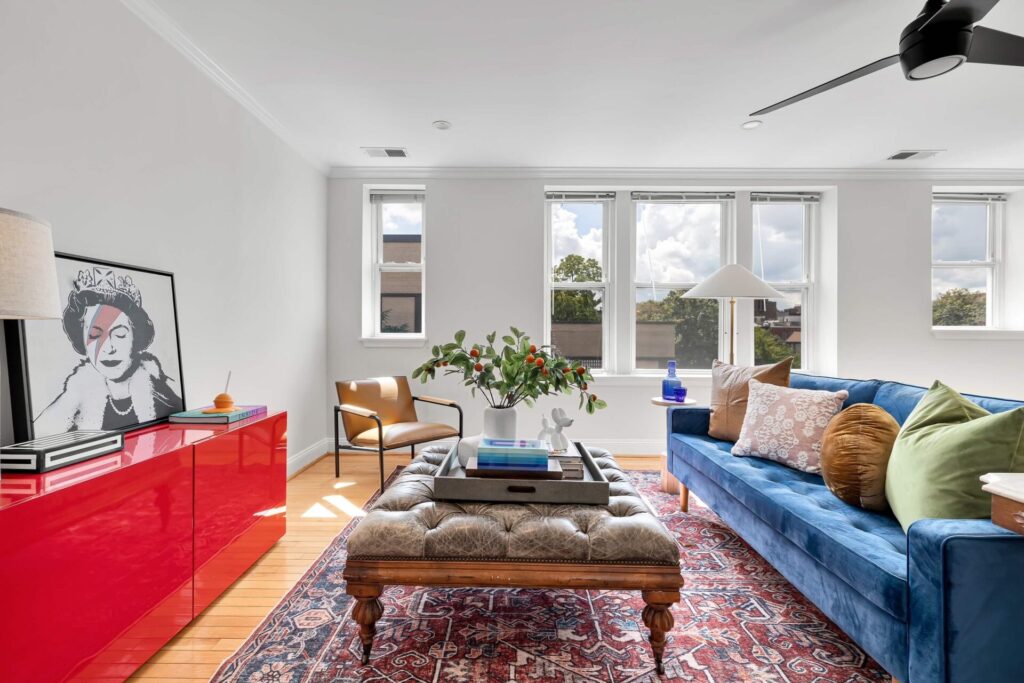
Q: Balancing creativity with the demands of running a business can be challenging. What tools or systems do you use to manage your staging projects efficiently and stay organized in your daily operations?
Michael: Spreadsheets on spreadsheets and lists on lists. If anyone has a better way, let me know. I’m still figuring that part out. I have my assistant building me an iPhone app that will hopefully take the place of all those spreadsheets. I luckily have a design assistant who is also a Java coder and builds apps for his day job. Fingers crossed it helps!
Q: What are some common misconceptions or objections you’ve encountered about home staging, and how do you educate potential clients or naysayers about the benefits it brings to the selling process?
Michael: Empty rooms do not inspire someone to buy a house. As much as you want to think that your white box with four walls and a roof will be so unique that it is better than another white box with four walls and a roof, it’s not.
You have to differentiate yourself in this market. You have to show people how they can live. It’s not just an opinion. I have seen it happen with home buyers and homes I have listed.
Q: How can real estate agents better communicate the value of staging to their clients, and what role can they play in making the staging process smoother and more effective?
Michael: Staging is about making your home appealing to buyers. It’s not your taste or opinion that matters. It’s that of the potential buyers. Additionally, staging is not an option, especially in a challenging market. There are lots of listings on the market that look similar, in similar areas, that don’t sell.
Quality staging with amazing photos inspire people to buy a home rather than just look at it.
You can learn more about Michael Fowler Creative at https://www.michaelfowlercreative.com/
- Designs By Deeda – Feature Friday - May 9, 2024
- Modern Glam Staging – Feature Friday - May 2, 2024
- Stageforce: A Game-Changing Platform Revolutionizing the Home Staging Industry - April 26, 2024

